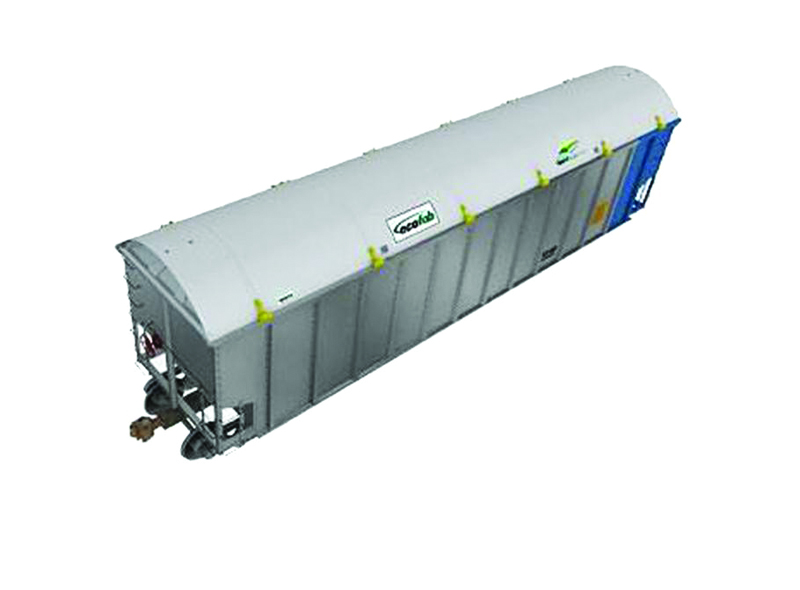Bay Area
Oakland Loses Court Battle Over Coal Terminal for the Second Time

The City of Oakland was rebuffed for a second time in its attempt to prevent the shipment of coal through Insight Terminal Solutions (ITS) under a contract with Oversize Bulk Commodity Terminal (OBOT) at the Oakland Army Base.
On May 26, 2020, the United States Ninth Circuit Court of Appeal upheld a May 15, 2018, ruling by US District Court Judge Vince Chhabria that the City of Oakland failed to prove that the transportation of coal through the city posed a substantial health and safety hazard to Oakland residents.
Judge Chhabria found that Oakland lacked substantial evidence to prove coal shipment was substantially dangerous because the record it relied on “was riddled with inaccuracies, major evidentiary gaps, erroneous assumptions, and faulty analyses.” The court further found that emissions estimates provided by Environmental Science Associates (“ESA”) were “unreliable based on five flaws in ESA’s analysis.”
Based upon those findings, and others, Judge Chhabria ruled that the city breached its 2013 contract with OBOT, the master developer of the terminal. OBOT may now be eligible for hundreds of millions of dollars in damages caused by the city’s failure to issue the necessary permits to begin construction of the terminal. These damages will ultimately be shouldered by Oakland’s taxpayers.
After hearing city and community concerns about the project, ITS, the terminal builder and operator, tried to strike a compromise. ITS’s proposed compromise included: a.) building a state-of-the-art terminal with hermetically sealed loading and transporting systems to prevent dust from escaping during the processing of coal and all other commodities, b.) a community benefits package totaling $6 million a year for 66 years controlled by a citizen commission which would decide how money should be allocated, and c.) a phasing out of coal processing by 2040, which is five years ahead of Gov. Gavin Newsom’s goal of ending fossil fuels usage by 2045 as published in SB 100. ITS’s proposal was not accepted.
The city played a risky game and lost. Now that the Court of Appeals has affirmed the lower court’s decisions in favor of the developers, ITS is not required to offer any mitigations or community benefits under the terms of the court ruling.
Nevertheless, ITS’ CEO, John Siegel, has said he will stand by his commitment to community benefits under the Oakland Initiative. “No matter whether the court requires this or not, we want to help underserved communities with jobs and benefits. We believe we all do better when everyone has a chance to benefit.”
Siegel went on to say he is still willing to talk to the city about other concessions and that ultimate decisions on those issues depend on how the city moves forward.
The City Council approved a development agreement with a unanimous vote on June 18, 2013. Importantly, Judge Chhabria found, and the court of appeals affirmed, “the agreement did not limit the types of bulk goods that could be shipped through the terminal. And prior to its execution, Oakland had some indication that coal was one of the potential commodities that might be handled.”
The Court ruled that after the city had entered into an agreement, to prevent the shipment of coal through the terminal, it would have to prove that such shipment created a substantial health and safety risk to residents. On June 27, 2016, the City Council passed a resolution declaring that the transport of coal posed a health and safety hazard to residents. They based that determination in large part ESA’s severely flawed study presented at a City Council hearing.
“The question now is will the City Council throw good money after bad?” asked Greg McConnell, a consultant working with ITS. McConnell – who has more than three decades of experience navigating choppy political waters – points out that the city currently has an estimated $120 million deficit, and he questioned whether it makes sense to spend hundreds of thousands more continuing to appeal a decision that has already lost twice in court.
“At a time when the city is reeling from major budget shortfalls and planning to lay off workers and cut vital services that taxpayers desperately need, it does not make sense to continue wasting money on this losing case,” McConnell stated. “That would be a double whammy to Oakland residents.”
Activism
Oakland Post: Week of May 21 – 27, 2025
The printed Weekly Edition of the Oakland Post: Week of May 21 – 27, 2025

To enlarge your view of this issue, use the slider, magnifying glass icon or full page icon in the lower right corner of the browser window.
Bay Area
Chevron Richmond Installs Baker Hughes Flare.IQ, Real-time Flare Monitoring, Control and Reduction System
While the sight of flaring can cause concern in the community, flares are essential safety systems that burn pollutants to prevent them from being released directly into the atmosphere. They activate during startup and shut-down of facility units or during upsets or equipment malfunctions. The typical flare stack is about 200 feet high so that vapors are well above street levels.

The Richmond Standard
Chevron Richmond recently installed flare.IQ, a real-time, automated system that will improve the facility’s flaring performance.
The technology, developed by Panametrics, a Baker Hughes business, uses sensors to monitor, reduce and control flaring in real time. It collects and assesses data on refinery processes, such as temperature, pressure, gas flow and gas composition, and adjusts accordingly to ensure flares burn more efficiently and cleanly, leading to fewer emissions.
“The cleaner the flare, the brighter the flame can look,” said Duy Nguyen, a Chevron Richmond flaring specialist. “If you see a brighter flame than usual on a flare, that actually means flare.IQ is operating as intended.”
While the sight of flaring can cause concern in the community, flares are essential safety systems that burn pollutants to prevent them from being released directly into the atmosphere. They activate during startup and shut-down of facility units or during upsets or equipment malfunctions. The typical flare stack is about 200 feet high so that vapors are well above street levels.
“A key element in Baker Hughes’ emissions abatement portfolio, flare.IQ has a proven track record in optimizing flare operations and significantly reducing emissions,” said Colin Hehir, vice president of Panametrics, a Baker Hughes business. “By partnering with Chevron Richmond, one of the first operators in North America to adopt flare.IQ, we are looking forward to enhancing the plant’s flaring operations.”
The installation of flare.IQ is part of a broader and ongoing effort by Chevron Richmond to improve flare performance, particularly in response to increased events after the new, more efficient hydrogen plant was brought online in 2019.
Since then, the company has invested $25 million — and counting — into flare minimization. As part of the effort, a multidisciplinary refinery team was formed to find and implement ways to improve operational reliability and ultimately reduce flaring. Operators and other employees involved in management of flares and flare gas recovery systems undergo new training.
“It is important to me that the community knows we are working hard to lower emissions and improve our flaring performance,” Nguyen said.
Also evolving is the process by which community members are notified of flaring incidents. The Community Warning System (CWS), operated by Contra Costa County is an “all-hazard” public warning system.
Residents can opt-in to receive alerts via text, e-mail and landline. The CWS was recently expanded to enable residents to receive notifications for “Level 1” incidents, which are considered informational as they do not require any community action.
For more information related to these topics, check out the resources included on the Chevron Richmond, CAER and Contra Costa Health websites. Residents are also encouraged to follow @chevronrichmond and @RFDCAOnline on Facebook and X (formerly Twitter), where additional information may be posted during an incident.
Activism
Oakland Hosts Town Hall Addressing Lead Hazards in City Housing
According to the city, there are 22,000 households in need of services for lead issues, most in predominantly low-income or Black and Latino neighborhoods, but only 550 to 600 homes are addressed every year. The city is hoping to use part of the multimillion-dollar settlement to increase the number of households served each year.

By Magaly Muñoz
The City of Oakland’s Housing and Community Development Department hosted a town hall in the Fruitvale to discuss the efforts being undertaken to remove lead primarily found in housing in East and West Oakland.
In 2021, the city was awarded $14 million out of a $24 million legal settlement from a lawsuit against paint distributors for selling lead-based paint that has affected hundreds of families in Oakland and Alameda County. The funding is intended to be used for lead poisoning reduction and prevention services in paint only, not water or other sources as has been found recently in schools across the city.
The settlement can be used for developing or enhancing programs that abate lead-based paint, providing services to individuals, particularly exposed children, educating the public about hazards caused by lead paint, and covering attorney’s fees incurred in pursuing litigation.
According to the city, there are 22,000 households in need of services for lead issues, most in predominantly low-income or Black and Latino neighborhoods, but only 550 to 600 homes are addressed every year. The city is hoping to use part of the multimillion-dollar settlement to increase the number of households served each year.
Most of the homes affected were built prior to 1978, and 12,000 of these homes are considered to be at high risk for lead poisoning.
City councilmember Noel Gallo, who represents a few of the lead-affected Census tracts, said the majority of the poisoned kids and families are coming directly from neighborhoods like the Fruitvale.
“When you look at the [kids being admitted] at the children’s hospital, they’re coming from this community,” Gallo said at the town hall.
In order to eventually rid the highest impacted homes of lead poisoning, the city intends to create programs and activities such as lead-based paint inspections and assessments, full abatement designed to permanently eliminate lead-based paint, or partial abatement for repairs, painting, and specialized cleaning meant for temporary reduction of hazards.
In feedback for what the city could implement in their programming, residents in attendance of the event said they want more accessibility to resources, like blood testing, and information from officials about lead poisoning symptoms, hotlines for assistance, and updates on the reduction of lead in their communities.
Attendees also asked how they’d know where they are on the prioritization list and what would be done to address lead in the water found at several school sites in Oakland last year.
City staff said there will be a follow-up event to gather more community input for programming in August, with finalizations happening in the fall and a pilot launch in early 2026.
-

 Activism4 weeks ago
Activism4 weeks agoAI Is Reshaping Black Healthcare: Promise, Peril, and the Push for Improved Results in California
-

 Activism4 weeks ago
Activism4 weeks agoBarbara Lee Accepts Victory With “Responsibility, Humility and Love”
-

 Activism4 weeks ago
Activism4 weeks agoESSAY: Technology and Medicine, a Primary Care Point of View
-

 Activism4 weeks ago
Activism4 weeks agoFaces Around the Bay: Author Karen Lewis Took the ‘Detour to Straight Street’
-

 Arts and Culture4 weeks ago
Arts and Culture4 weeks agoBOOK REVIEW: Love, Rita: An American Story of Sisterhood, Joy, Loss, and Legacy
-

 Activism4 weeks ago
Activism4 weeks agoNewsom Fights Back as AmeriCorps Shutdown Threatens Vital Services in Black Communities
-

 #NNPA BlackPress4 weeks ago
#NNPA BlackPress4 weeks agoThe RESISTANCE – FREEDOM NOW
-

 Activism4 weeks ago
Activism4 weeks agoTeachers’ Union Thanks Supt. Johnson-Trammell for Service to Schools and Community













































